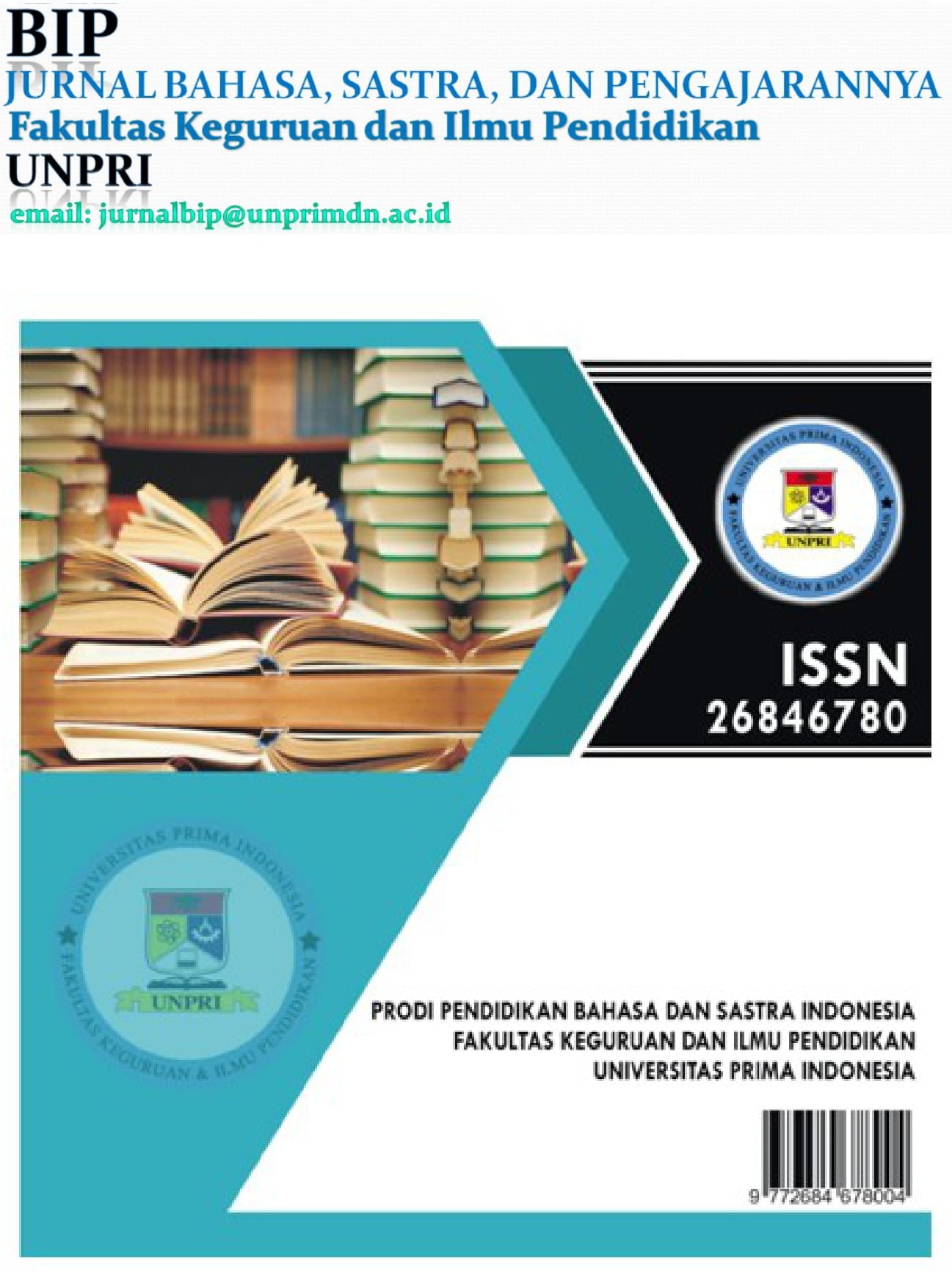The Linguistic Landscape of Ruteng City: A Study on Shop Signs Owned by Chinese and Indigenous Indonesian Ethnic Groups
##plugins.themes.academic_pro.article.main##
Abstract
The main question in this research is how the shop signs owned by Chinese and Indigenous Indonesian communities in Ruteng represent ethnic identity and cultural values, reflect multicultural dynamics, and illustrate the process of acculturation within the public space. The objective of this research is to describe the forms of language representation used in the shop signs owned by Chinese and Indigenous Indonesian communities in Ruteng; to identify the cultural values reflected in the language choices and visual appearances of the shop signs; and to analyze how multicultural dynamics and cultural acculturation processes are manifested in the linguistic landscape of Ruteng City. This research used a qualitative approach, utilizing methods of observation, photography, interviews, content analysis, and literature study. The data were analyzed using content and thematic analysis techniques.
The research results show that Indigenous Indonesian store owners tend to choose names and colors based on personal preferences and the concept of modernity. In contrast, Chinese store owners preserve cultural values by selecting names that carry meanings of luck, harmony, and feng shui principles. Chinese ethnic stores tend to have symbolic functions, whereas Indigenous Indonesian stores tend to be informative. The language used in Chinese ethnic stores is monolingual, while Indigenous Indonesian stores use both monolingual and bilingual languages. The multicultural dynamics, viewed through the lens of the linguistic landscape in Ruteng, show an acculturation process characterized by harmonious social integration, where cultural identity is preserved without constraining social interaction. Ruteng City emerges as an example of inclusive and dynamic multiculturalism.
##plugins.themes.academic_pro.article.details##

This work is licensed under a Creative Commons Attribution-ShareAlike 4.0 International License.
References
- Anggraeni, F. D., & Hidayat, R. (2020). Penguatan Identitas sebagai Strategi Bertahan Warga Adat Sunda Wiwitan. Indonesian Journal of Sociology, Education, and Development, 2(2), 75–84. https://doi.org/10.52483/ijsed.v2i2.27
- Ardhian, D., & Soemarlam, S. (2018). Mengenal kajian lanskap linguistik dan upaya penataannya dalam ruang-ruang publik di Indonesia. Jurnal Akrab Juara, 3(3), 170–181.
- Bourhis, R. Y., El-Geledi, S., & Sachdev, I. (2015). Language, ethnicity and intergroup relations. In Language, discourse and social psychology (pp. 15–50). Springer.
- Couffignal, G., & Jourde, M. (2015). Linguistique Et Colonialisme: La Place Des Études Sur Le Xvi E Siècle Europeen. Glottopol Revue de Sociolinguistique En Ligne, 20, 19–37.
- Faizi, A., Wahyuni, L., & Islahuddin, I. (2024). lanskap Linguistik Wujud Pertarungan Multilingual: Kajian Lanskap Linguistik. Jurnal Metamorfosa, 12(2), 116–125. https://doi.org/10.46244/metamorfosa.v12i2.2886
- Gorter, D. (2018). Linguistic landscapes and trends in the study of schoolscapes. Linguistics and Education, 44, 80–85.
- Gorter, D., & Cenoz, J. (2023a). A panorama of linguistic landscape studies. Channel View Publications.
- Gorter, D., & Cenoz, J. (2023b). A panorama of linguistic landscape studies. Channel View Publications.
- Halim, I. S., Guguh Sujatmiko, G., & Surjani, R. M. (2023). Aplikasi Warna dan Angka Bermakna Baik dalam Budaya Tionghoa untuk Desain Packaging Hampers Tingjing. Jurnal Kreatif : Desain Produk Industri Dan Arsitektur, 11(2), 10. https://doi.org/10.46964/jkdpia.v11i2.359
- Kurnia, F. M., & Kurniawan, B. (2016). Persepsi Warna Bagi Mahasiswa Etnis Tionghoa Universitas Kristen Petra. Century: Journal of Chinese Language, Literature and Culture, 4(1), 41–49.
- Lon, Y. S., & Widyawati, F. (2020). Adaptasi dan Transformasi Lagu Adat dalam Liturgi Gereja Katolik di Manggarai Flores. Jurnal Kawistara, 10(1), 17–31.
- Lou, J. J. (2016). The linguistic landscape of Chinatown: A sociolinguistic ethnography (Vol. 6). Multilingual Matters.
- Lune, H., & Berg, B. L. (2017). Qualitative research methods for the social sciences. Pearson.
- Moon, Y. J. (2018). Keragaman Berbahasa Berdasarkan Jenis Kelamin pada Bahasa Manggarai Dialek Ruteng. PROLITERA: Jurnal Penelitian Pendidikan, Bahasa, Sastra, Dan Budaya, 1(1), 64–70.
- Moraes, M. L. B. (2019). Stuart Hall: cultura, identidade e representação. Revista Educar Mais, 3(2), 167–172. https://doi.org/10.15536/reducarmais.3.2019.167-172.1482
- Ng, F., Sunarto, P., & Haswanto, N. (2015). Relasi antara Prinsip Visual Barat dan Fengshui pada Desain Logo. Wimba : Jurnal Komunikasi Visual, 3(2). https://doi.org/10.5614/jkvw.2011.3.2.5
- Nowell, L. S., Norris, J. M., White, D. E., & Moules, N. J. (2017). Thematic analysis: Striving to meet the trustworthiness criteria. International Journal of Qualitative Methods, 16(1), 1609406917733847.
- Nur, A. M. (2019). Relasi Agama, Budaya dan Perilaku Ekonomi pada Pola Dagang Etnis Tionghoa Kota Padang. Turast : Jurnal Penelitian Dan Pengabdian, 4(1), 89–97. https://doi.org/10.15548/turast.v4i1.338
- Nuris, M. S., & Syahrani, R. A. (2021). Akulturasi Komunikasi Masyarakat Suku Bugis dan Suku Banjar di Desa Handil Terusan, Kalimantan Timur. Jurnal Audience, 4(01), 60–72. https://doi.org/10.33633/ja.v4i01.4220
- Oktavianus. (2021). Lanskap Linguistik Bahasa Tulis di Ruang Publik dan Upaya Pencegahan Penularan Virus Korona. Jurnal Lazuardi, 4(1), 43–56. https://doi.org/10.53441/jl.Vol4.Iss1.54
- Pramesti, P. D. M. Y., & Hermawan, G. S. (2024). Analysis of the Linguistic Landscape of Signboards in Japan (A Semiotic Study). Prosiding Seminar Nasional Riset Bahasa Dan Pengajaran Bahasa, 6(1), 12–24.
- Streit, A. K. (2017). Analisa Peran Visual dalam Pernikahan Tradisional Adat Tiong Ho. Rupa Rupa, 1(2).
- Surya Prasetya, H., Dwi Sasongko, S., & Agan, S. (2022). Pemilihan Kata Konotasi pada Kumpulan Lagu Hip Hop di Indonesia Karya Eizy. Wacana : Jurnal Bahasa, Seni, Dan Pengajaran, 6(2), 37–48. https://doi.org/10.29407/jbsp.v6i2.19122
- Tresnasari, N., Ariestafuri, N., Rahardjo, H., Kuraesin, U., & Novitasari, R. (2022). Konsep Lanskap Linguistik Desa Karyawangi Parongpong. Jurnal Inovasi Masyarakat, 2(1), 70–76. https://doi.org/10.33197/jim.vol2.iss1.2022.870
- Wulansari, D. W. (2020). Linguistik lanskap di Bali: Tanda multilingual dalam papan nama ruang publik. KREDO: Jurnal Ilmiah Bahasa Dan Sastra, 3(2), 420–429.
- Yu, H.-C. (2015). A Comparative Study of the Meanings of Numbers in English and Chinese Cultures. Intergrams.

